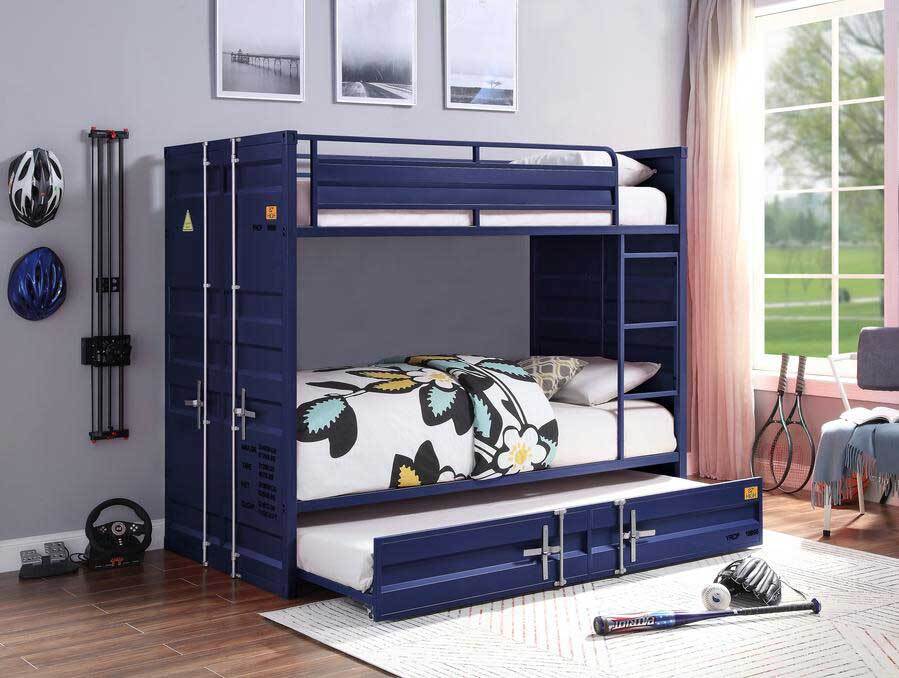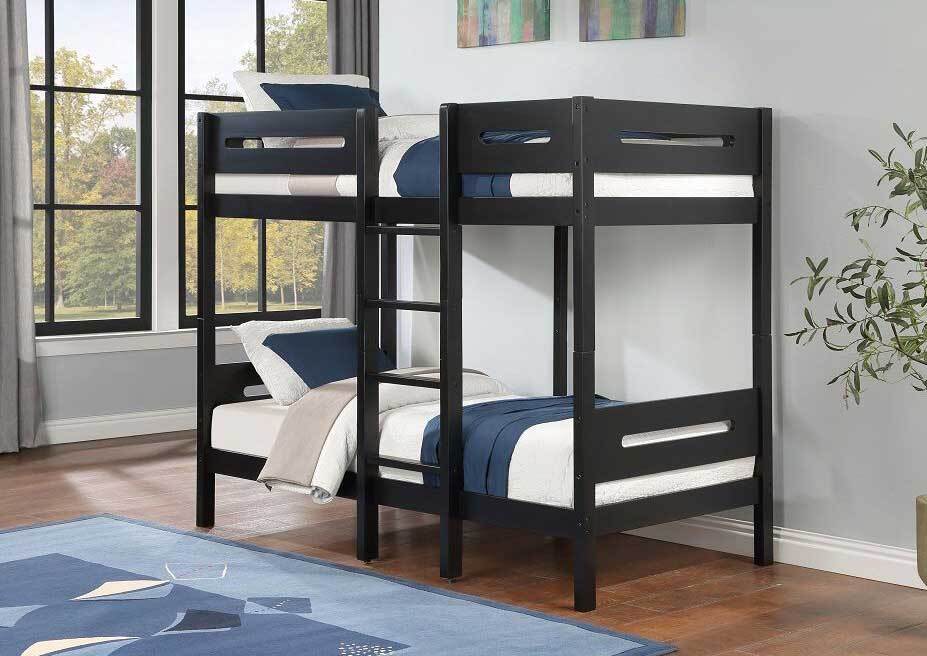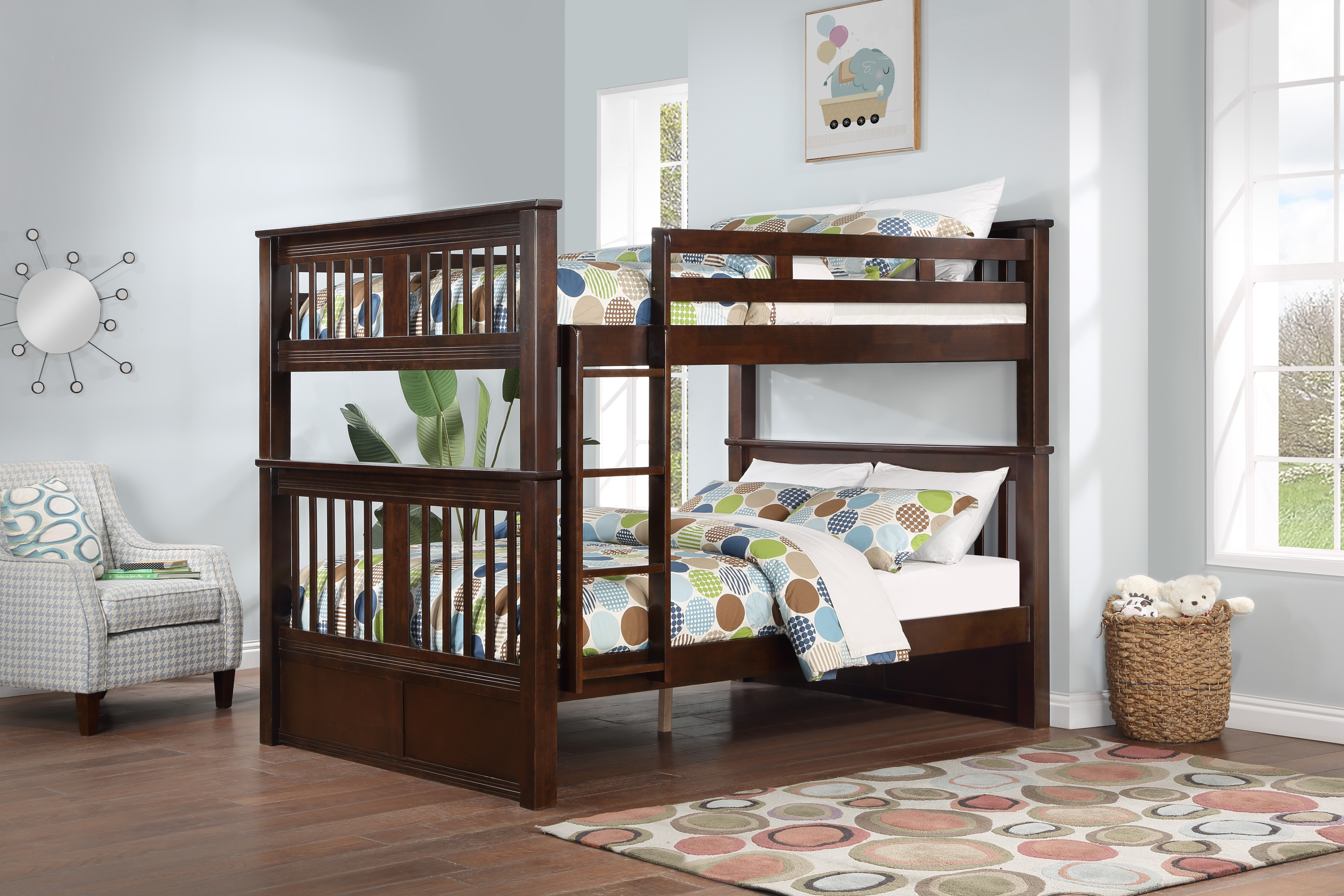How to Anchor a Bunk Bed to a Wall
Posted by UPW on Apr 4th 2025

In both residential homes and short-term rentals, maximizing sleeping capacity without overcrowding a room is a common design goal. Bunk beds support that goal by stacking sleeping spaces vertically, freeing up floor space for storage, movement, or multipurpose use. However, incorporating a bunk bed also introduces structural considerations that aren’t present with standard beds.
Do Bunk Beds Need to Be Attached to the Wall?
Their height and narrow footprint can lead to concerns about shifting, wobbling, or tipping, especially during daily use or when installed on uneven flooring. For this reason, many homeowners and hosts begin to ask whether attaching the bed to the wall is necessary for safety.
The answer isn’t always universal, and factors like wall type, user behavior, and bunk bed design all come into play. So, does a bunk bed really need to be attached to the wall, or can you trust the frame to hold its ground?
Are Standard Bunk Beds Safe?
Yes, standard bunk beds are safe as long as they are manufactured in compliance with established safety standards like ASTM F1427 and 16 CFR Part 1213 set by the Consumer Product Safety Commission (CPSC). These guidelines address critical structural requirements, including guardrail placement, ladder integrity, and entrapment prevention.
Reputable manufacturers also issue a General Certificate of Conformity (GCC), confirming that the bed meets applicable federal regulations. When sourced from a certified supplier and assembled according to the instructions, a standard bunk bed is considered safe for daily use in both residential and commercial environments.
Pros and Cons of Standard Bunk Beds
Freestanding bunk beds are a common option for households that prefer not to anchor furniture into walls, whether due to rental restrictions, evolving room layouts, or simply personal preference. They provide the convenience of easier relocation and assembly, but there are meaningful trade-offs to consider, especially in high-use environments.
Choosing between a wall-anchored or standalone bunk bed isn't just about flexibility, it's also about how the bed will be used day-to-day and who will be sleeping in it.
- Stability - Anchored bunk beds offer a higher level of structural stability, especially on wood or tile flooring where movement can occur more easily. A standard bunk bed, while still secure when properly assembled, may shift slightly over time, particularly in settings with frequent movement or top bunk access.
- Mobility and Room Flexibility - Freestanding models make it easier to reconfigure a room layout, relocate the bed to another space, or disassemble it for moving. Anchored beds are better suited for permanent placements, such as in a vacation home or guest room that won’t require frequent furniture changes.
- Safety in Active Households - For rooms used by active children or teens, wall anchoring can prevent tipping or sway caused by jumping, climbing, or repeated climbing on ladders. In contrast, unanchored bunk beds in the same context may require more frequent hardware checks and reinforcements to stay secure.
- Installation Requirements - Anchoring requires drilling into studs, selecting the correct hardware based on wall material, and ensuring accurate alignment. Freestanding bunk beds skip this step entirely, which may be preferable in rental units or buildings with wall limitations.
- Performance in Multi-Guest Environments - In short-term rentals, hostels, or shared adult spaces, anchored adult bunk beds reduce liability by lowering the risk of movement during sleep. Unanchored options still work well in these spaces but should be placed flush against a wall and checked regularly for wear at joints and ladder connections.
- Structural Longevity - Beds that are anchored tend to hold their shape over time, as anchoring reduces the stress on frame joints by absorbing some of the lateral force. Standards beds experience more wear at screw and bolt connections, especially if they’re frequently disassembled or relocated.
- Ceiling Height and Room Constraints - If your bunk bed is placed in a low-ceilinged or irregularly shaped room, anchoring can help prevent top-heavy movement when clearance is tight. Freestanding beds may still be used in these settings but should be carefully tested for stability before being put to daily use.
Both wall-anchored and unanchored bunk beds can offer a safe and reliable sleep setup when chosen and maintained properly. Whether anchoring is worthwhile depends on both how the bunk bed will be used and the conditions of the room it's placed in.

Should Bunk Beds Be Anchored?
Wall anchoring isn't always required, but in some cases, it adds an extra layer of safety and peace of mind, particularly in environments where movement, weight shifts, or layout challenges are factors.
How to Anchor a Bunk Bed
Anchoring a bunk bed is a relatively simple process, but the method depends on the wall material you’re working with whether it's drywall with studs, solid wood paneling, brick, or poured concrete.
While the anchoring approach will vary slightly, the objective remains the same: secure the upper third of the bunk bed frame to a structurally stable surface to reduce shifting, lateral sway, and the risk of tipping. When done correctly, the process takes less than an hour and significantly reinforces the long-term stability of your bed—especially in rooms where the bunk will be used daily or by multiple individuals.
Step 1: Identify Your Wall Type
Start by identifying the material behind the wall where the bunk bed will be positioned. For drywall, check whether it’s installed over wooden studs (most common in residential construction). To ensure a secure hold, always anchor directly into the wall studs—not just the drywall.
If you're working with brick or concrete, such as in basements, converted garages, or older properties, you'll need masonry anchors that can expand inside the dense material.For wood paneling, confirm that it’s supported by a solid frame. If the panels are decorative or hollow-core, locate the studs behind them or choose a different anchoring method.

Step 2: Locate Studs or Solid Wall Points
For drywall installations, use a digital stud finder to detect vertical wall studs behind the sheetrock. Studs are typically spaced 16 inches apart on center.
Once located, mark two or more points that align with the top one-third of the bed frame—anchoring higher on the frame helps prevent tipping from the top bunk during entry, exit, or movement. For brick or concrete, mark the desired anchor height and use painter’s tape or masking tape at each drill site to reduce drill bit drift when drilling into hard materials.
Step 3: Choose the Right Anchoring Hardware
For drywall over studs or wood paneling, use heavy-duty steel L-brackets at least 4 inches in size or anti-tip wall straps specifically rated for furniture. Brands like Safety 1st, KidCo, and Everbilt offer tested brackets with published weight ratings. Look for fasteners that are rated for a minimum of 100 lbs. per bracket for single anchors, or higher if the bed will support heavier sleepers.
For brick or concrete walls, select masonry sleeve anchors, expansion bolts, or Tapcon concrete screws. These are designed to grip securely inside dense surfaces. A hammer drill with a carbide-tipped masonry bit will be needed to bore precise holes into stone or concrete. Avoid using plastic drywall anchors or general-purpose screws, as these can fail under the load of a freestanding bunk bed.
Step 4: Attach Brackets to the Bunk Bed Frame
Position the brackets on the rear upper frame or top cross rail of the bunk bed; never anchor to the lower legs or base. Pre-drill pilot holes if you're installing into a solid hardwood frame like oak or maple to avoid splitting the wood.
If you're anchoring to a metal frame, use self-tapping metal screws or machine bolts, depending on whether the frame has pre-threaded connection points. Ensure each bracket is seated flush to the surface and fastened firmly to prevent any rotational movement.
Step 5: Anchor the Brackets to the Wall
For drywall or wood paneling, align the bracket hole with the stud marking, drill a pilot hole, and drive a 3"–4" lag screw into the center of the stud using a ratchet or power drill with socket adapter. Confirm that the bracket is tight against the wall without overtightening, which could crack the drywall or warp the bracket.
For brick or concrete, drill into your marked locations using a hammer drill fitted with a ⅜" or ½" masonry bit, depending on your anchor size. Clean out the hole dust with a vacuum or compressed air. Insert your expansion anchor or sleeve anchor until flush, then use a ratchet or wrench to drive the included bolts, ensuring the bracket is level and tightly secured.
Step 6: Test the Stability
Once installation is complete, carefully test the stability of your bed by rocking it gently from the headboard and then the footboard. The frame should remain stable with no perceptible movement at the bracket connection. Recheck each fastener and confirm no flex or play exists between the frame and wall.
If any hardware feels loose, tighten incrementally until the bracket is firm but not overly stressed. It's a good practice to inspect and re-tighten your fasteners seasonally.
Step 7: Final Considerations
Always secure the bed to the upper third of the frame, as anchoring lower sections won’t counterbalance motion at the top level where shifting is most likely. In multi-user spaces like short-term rentals, bunkhouses, or vacation homes, anchoring both sides of the frame ensures added redundancy and durability.
If your bunk bed includes integrated stairs, storage units, or bookshelves, make sure you anchor through a non-removable structural part of the frame, not drawers or panels that may shift under load. Take note of your wall material’s weight limits and the bracket's rated load capacity to avoid any mismatch that could affect long-term performance.
Choosing whether to anchor your bunk bed doesn’t come down to a single rule—it’s about matching the right setup to the way your space is used. At Just Bunk Beds, we offer a curated range of bunk beds engineered for freestanding and anchored use, with models designed to meet various household and commercial needs. Browse our catalog or contact us for expert help matching the right bed to your space and setup.


